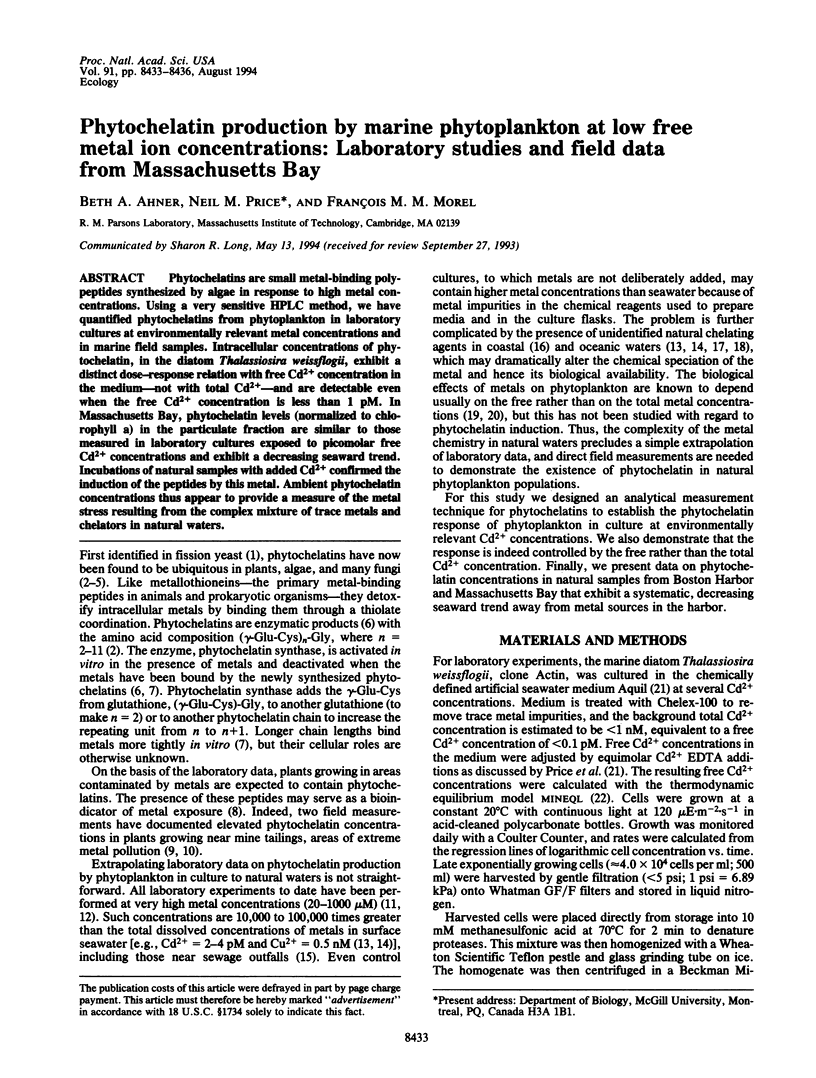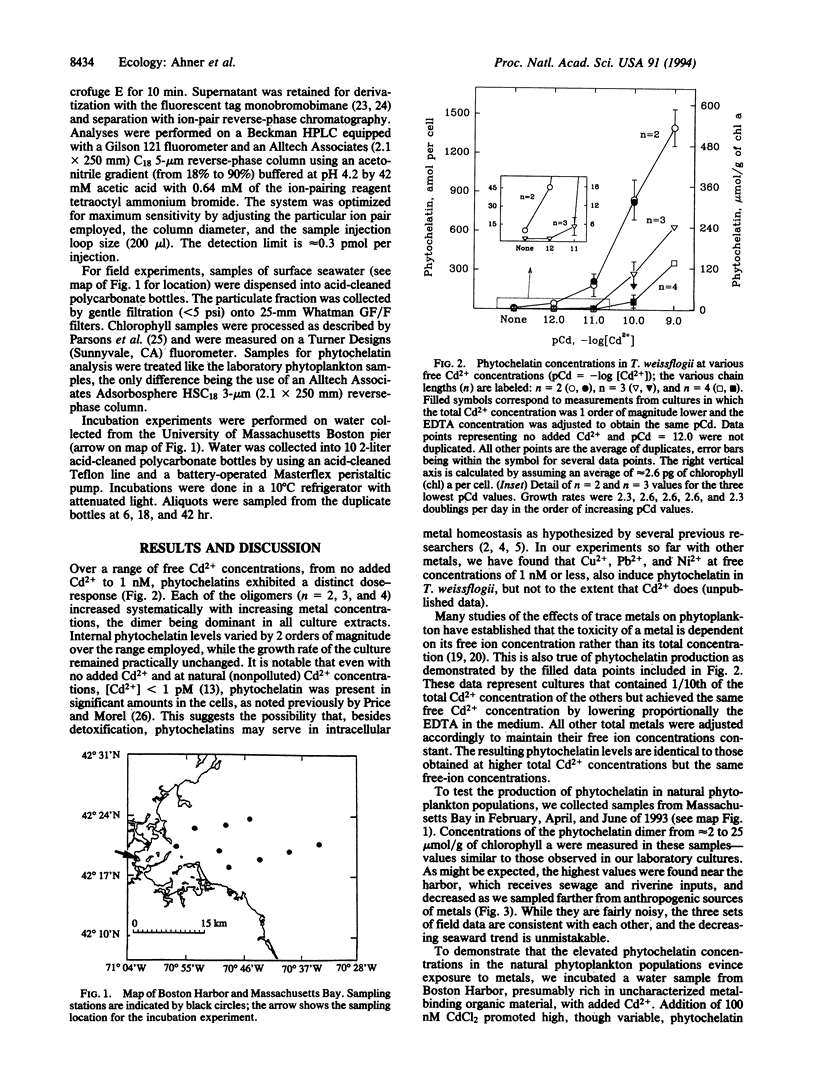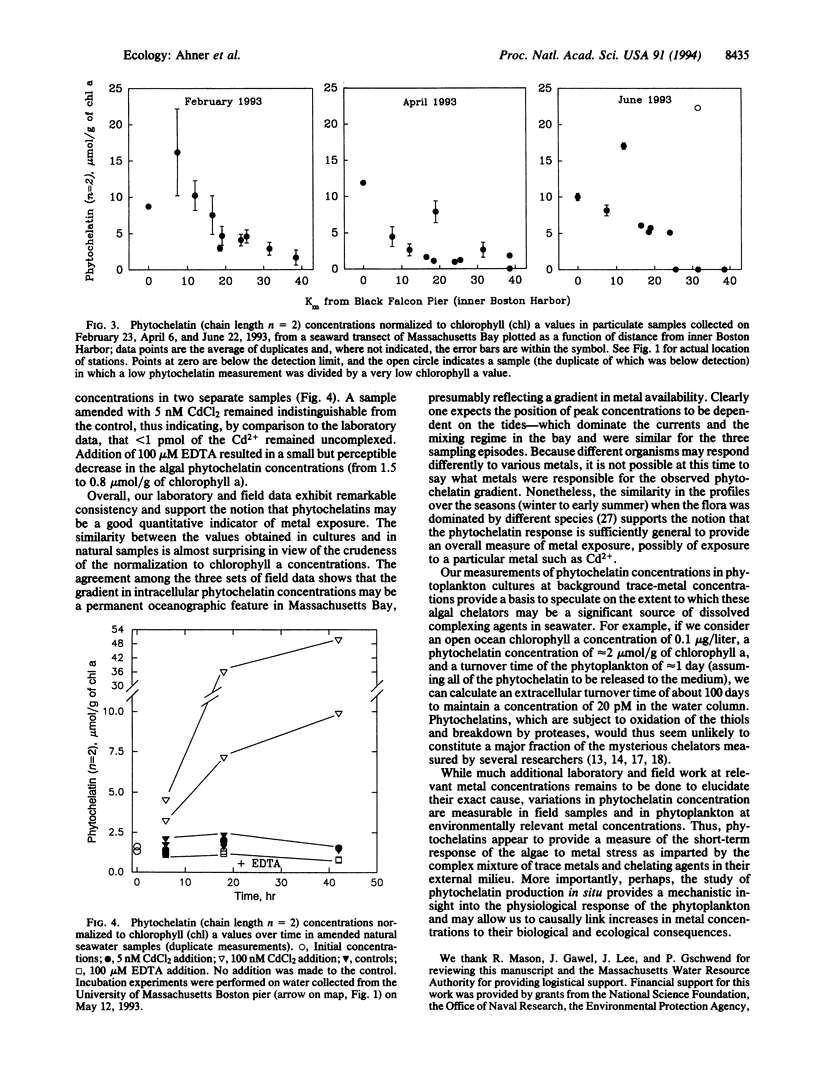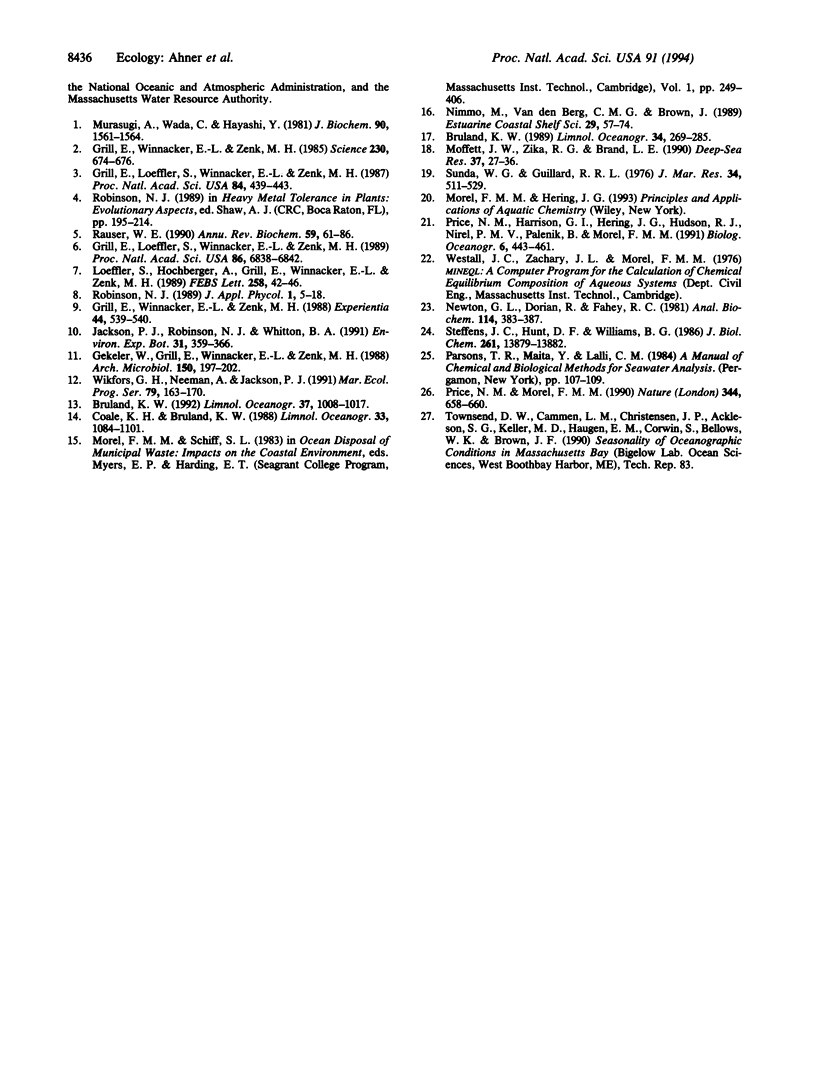Abstract
Phytochelatins are small metal-binding polypeptides synthesized by algae in response to high metal concentrations. Using a very sensitive HPLC method, we have quantified phytochelatins from phytoplankton in laboratory cultures at environmentally relevant metal concentrations and in marine field samples. Intracellular concentrations of phytochelatin, in the diatom Thalassiosira weissflogii, exhibit a distinct dose-response relation with free Cd2+ concentration in the medium--not with total Cd(2+)--and are detectable even when the free Cd2+ concentration is less than 1 pM. In Massachusetts Bay, phytochelatin levels (normalized to chlorophyll a) in the particulate fraction are similar to those measured in laboratory cultures exposed to picomolar free Cd2+ concentrations and exhibit a decreasing seaward trend. Incubations of natural samples with added Cd2+ confirmed the induction of the peptides by this metal. Ambient phytochelatin concentrations thus appear to provide a measure of the metal stress resulting from the complex mixture of trace metals and chelators in natural waters.
Full text
PDF



Selected References
These references are in PubMed. This may not be the complete list of references from this article.
- Grill E., Löffler S., Winnacker E. L., Zenk M. H. Phytochelatins, the heavy-metal-binding peptides of plants, are synthesized from glutathione by a specific gamma-glutamylcysteine dipeptidyl transpeptidase (phytochelatin synthase). Proc Natl Acad Sci U S A. 1989 Sep;86(18):6838–6842. doi: 10.1073/pnas.86.18.6838. [DOI] [PMC free article] [PubMed] [Google Scholar]
- Grill E., Winnacker E. L., Zenk M. H. Phytochelatins, a class of heavy-metal-binding peptides from plants, are functionally analogous to metallothioneins. Proc Natl Acad Sci U S A. 1987 Jan;84(2):439–443. doi: 10.1073/pnas.84.2.439. [DOI] [PMC free article] [PubMed] [Google Scholar]
- Grill E., Winnacker E. L., Zenk M. H. Phytochelatins: the principal heavy-metal complexing peptides of higher plants. Science. 1985 Nov 8;230(4726):674–676. doi: 10.1126/science.230.4726.674. [DOI] [PubMed] [Google Scholar]
- Murasugi A., Wada C., Hayashi Y. Cadmium-binding peptide induced in fission yeast, Schizosaccharomyces pombe. J Biochem. 1981 Nov;90(5):1561–1564. doi: 10.1093/oxfordjournals.jbchem.a133627. [DOI] [PubMed] [Google Scholar]
- Newton G. L., Dorian R., Fahey R. C. Analysis of biological thiols: derivatization with monobromobimane and separation by reverse-phase high-performance liquid chromatography. Anal Biochem. 1981 Jul 1;114(2):383–387. doi: 10.1016/0003-2697(81)90498-x. [DOI] [PubMed] [Google Scholar]
- Rauser W. E. Phytochelatins. Annu Rev Biochem. 1990;59:61–86. doi: 10.1146/annurev.bi.59.070190.000425. [DOI] [PubMed] [Google Scholar]
- Steffens J. C., Hunt D. F., Williams B. G. Accumulation of non-protein metal-binding polypeptides (gamma-glutamyl-cysteinyl)n-glycine in selected cadmium-resistant tomato cells. J Biol Chem. 1986 Oct 25;261(30):13879–13882. [PubMed] [Google Scholar]


